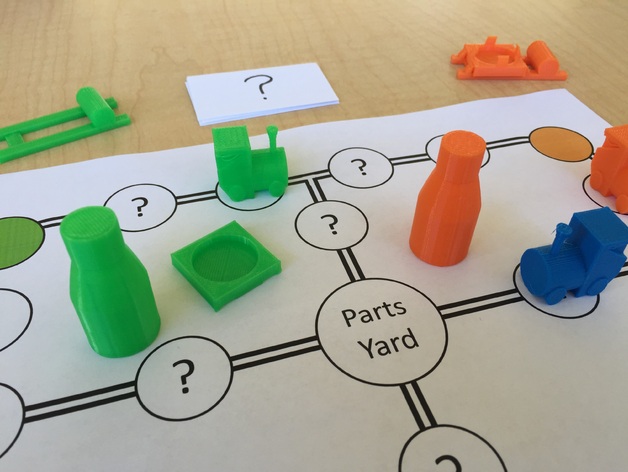
Game On!
thingiverse
What better way to ignite learning than with a challenge? Add some excitement or competition to an activity and chances are, students will be more engaged. This lesson brings together social studies, 3D design, and challenges in one lesson to help students build both content knowledge and skills for the future. Standards CCSS Overview and Background This lesson benefits from not only being a thrilling fusion of several subjects, but also encourages the creativity of your students! Although the subject of study may be assigned, the final product (i.e. completed challenge) is open wide to interpretation. A traditional board challenge, like the mock-up example I provided, is only one of many options, but so too are card challenges using 3D printed tokens, a hexagon tile land building challenge, and many more. Objectives: Students will build skills while also increasing historical knowledge through challenge design. Skills Learned (Standards): CCSS: WHST.6-8.1.C Lesson Plan and Activity Opening the lesson with a challenge related to a historical topic covered in class is a great way to hook students on the assignment. Assign topics to student teams based on a current or upcoming unit of study. Using the methods established in your class, students must research and document their findings. Presentation of these findings can occur at the end of the lesson in conjunction with the finished challenge, or can be presented mid-lesson, prior to beginning work on the challenge. Allow teams a class session or two to brainstorm their challenge idea, including creating some mock-ups of the board, cards, pieces, etc. This will make the design process go much more smoothly. If students lack design experience, set aside a session or two for work with Tinkercad, or the design program of your choice. Allowing students to test out some designs ahead of time will increase their ability to produce usable items to accompany their finished challenge. Once challenge production begins in earnest, it will be important to support student design problem solving and having the opportunity to test the challenge play mechanics as needed. Conclude the lesson with a "challenge day" in which students rotate from group to group as a student representative from each group explains the topic and design process and leads others through 5-10 minutes of playing the challenge. Displaying completed challenges in the library or a lobby display case is a fine way to demonstrate to the school community at large how technology and arts can be integrated with traditional academic subjects such as history. Duration of Lesson Two weeks Preparation This lesson is intended to occur within a larger lesson focusing on a period in history which may lend itself to a challenge of some kind. Rubric and Assessment Check out the suggested assessment guidelines I included among the Thing Files above for more ideas.
With this file you will be able to print Game On! with your 3D printer. Click on the button and save the file on your computer to work, edit or customize your design. You can also find more 3D designs for printers on Game On!.
